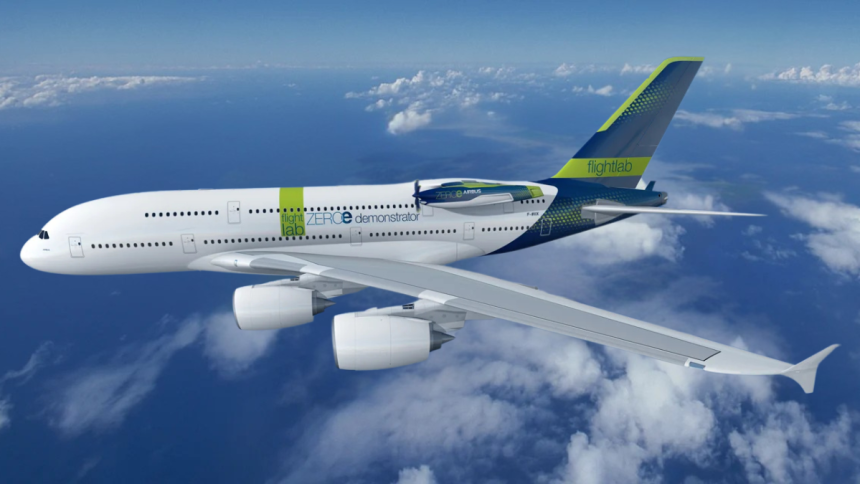A sector under transformation
The aviation industry is entering a new era, one where sustainability is no longer an aspiration but an operational necessity. With global air travel projected to grow steadily over the coming decades, the clear challenge is to reduce emissions while continuing to connect people, economies, and communities under high demand. With the production of over 2% of global greenhouse gas emissions and an accounted 12% of transport-related emissions (respectively in 2022 and 2018), the heavy impact of aviation on the planet cannot be ignored anymore: thankfully, a wave of innovation is reshaping how aircraft are built, fuelled, and operated.
Let’s see the main innovations that work towards a more responsible scenario.
1. SAF: Sustainable Aviation Fuel, a ready-now solution
Among the latest developments, there is certainly Sustainable Aviation Fuel (SAF). Produced from renewable feedstocks such as organic waste, algae, or non-fossil materials, SAF has been proven to reduce lifecycle CO2 emissions by up to 80% compared to conventional jet fuel. Critically, it is compatible with today’s aircraft and airport infrastructure, making it a “drop-in” solution that requires no technological overhauls.
SAF plays a central role, especially in the sector’s decarbonisation targets, like the Long-Term Aspirational Goal (LTAG) adopted by the International Civil Aviation Organisation (ICAO). While SAF offers a great CO2 cut, it also contributes to non-CO2 benefits by significantly reducing particulate emissions, too. So not only does it stand as a ready solution to decarbonisation, it emerges as a solution to a generally more sustainable aviation.
2. Propulsion systems: hybrid, electric, and hydrogen
The long-term future of flight dramatically depends on breakthroughs in propulsion technologies. Already in development and aimed to enter service in 2035, hybrid-electric systems promise to lower fuel-burning emissions by combining a high-performance thermal engine with an electric motor and batteries, like the ATR EVO Concept. This would allow further reduction in CO2 emissions compared to current aircraft, and improved performance. These systems are particularly well-suited to short-haul regional routes, where full electrification is not yet feasible.
3. Smarter, lighter aircraft design
It might look simple, but improvements in aircraft design are key to sustainable aviation, especially when experimenting with lightweight composite materials, advanced wing structures, and aerodynamic enhancements. These design modifications, in fact, can significantly reduce energy use, improving fuel efficiency. Another consequent benefit is that they also lower maintenance needs and offer an overall better performance.
Lastly, a smart aircraft design also considers the entire aircraft life cycle, from design to dismantling, and therefore works into integrating more recyclability. Either through the introduction of new materials or through new processes, the most advanced companies, like ATR now count aircraft made of 85.5% recyclable or reusable parts; a number that, with time and experimentation, can only go up. The support of a complete circular economy will definitely have a positive impact on the sector’s footprint.
Together with operational strategies and with a collective effort from companies and institutions alike, a sustainable aviation is achievable. It will be defined by the innovations adopted today and by the collective commitment.
Lynn Martelli is an editor at Readability. She received her MFA in Creative Writing from Antioch University and has worked as an editor for over 10 years. Lynn has edited a wide variety of books, including fiction, non-fiction, memoirs, and more. In her free time, Lynn enjoys reading, writing, and spending time with her family and friends.















